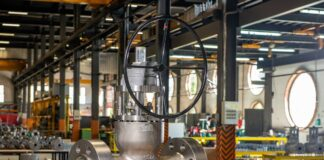That would be the efficiency that is crucial for competitiveness today in this fast world of manufacturing, and no one knows it better than the forging suppliers of India.
The latest innovations can raise productivity, reduce costs, and enhance the quality of their products. What are some of the most significant innovations that keep them ahead of competition?
1. Automation in Forging Processes
Reducing Human Error
Time consumption is lesser in forging as it forms part of automation. Automated machines facilitate one to perform repetitive duties efficiently with no component of human error. Suppliers in India have begun to automate production in forging for uniformity and consistency in the product requirement. The quality of the final product is not only ensured by saving the more precious commodity called time but also the automation of forging.
Enhancing Productivity
Automated systems keep the production cycles much faster than those within the cycle; this way, suppliers meet deadlines easily. With its integrated nature, bottlenecks are also kept to a minimum in the production line hence enabling it to handle huge volumes of orders without this affecting the quality of their work.
Also Read: How Indian Forging Suppliers Are Adopting Green Manufacturing
2. Advanced Forging Machinery
Precision and Speed
Advanced machinery development would be one of the most significant inventions of the forging industry. Modern forging equipment is quite more precise and fast compared to earlier times. Quality parts will be produced by Indian suppliers within less hours than ever, and high machines can be used for more intricate shapes and designs.
Lower Maintenance Costs
New forging machines are stronger and require fewer maintenance. This reduces the possibility of downtime and means suppliers can spend more time on production compared to the repair work involved. The same lower levels of maintenance translate to reduced savings that may be passed down to the client.
3. Use of Simulation Software
Optimizing Designs
Simulation software allows forging suppliers to simulate and optimize designs before actual production. One can then find out the problems way before one goes into actual production and correct those in time. In the process, it saves time and reduces the quantity of waste material. This technology is now being used by forging suppliers in India to give better products with lesser iterations.
Reducing Production Costs
With simulation software, one avoids trial and error from the production process. The cost of productions and the need to ensure that specifications are met becomes minimal with simulation software. This, therefore improves the efficiency of operations because designs can be optimized virtually before actual production.
Also Read: Top 5 Strategies for Choosing the Best Forging Supplier
4. Adoption of Data Analytics
Improving Decision-Making
Data analytics is quickly becoming a strong asset to the construction suppliers as companies are now scanning data generated by the production process to identify procedures that are performing inefficiently and then improving those procedures. Since Indian suppliers will be making more informed decisions about their operations that will permit them to be more efficient, resource management will become better also, and productivity will be increased.
Enhancing Quality Control
Data analytics also plays a role in quality control. Monitoring data at various stages of the production process, and its analysis will detect early defects which can be corrected in real-time, so only quality products will therefore come out of the factory.
Related: A Comprehensive Guide to Forged Flanges Manufacturing
5. 3D Printing for Prototyping
Speeding Up the Design Process
The introduction of 3D printing in the forging industry revolutionized the face of 3D printing. It accelerates the design process using which Indian suppliers can quickly create prototypes. They can test and refine designs before they go full-scale production. So, the reduction in lead times and cost of outsourcing prototypes is brought about by the concept of in-house prototype production.
Reducing Material Waste
The main advantage that 3D printing has over other prototyping processes is the reduction in waste. Most of the prototyping processes result in wasting a lot of material by just letting it sit and being left there for long; 3D printing just uses what is needed, making the whole process efficient and less harmful to the environment.
6. Use of Sustainable Materials
Environmental Responsibility of Forging Suppliers in India
On the other hand, sustainability of the environment is essential for keeping it clean for the next generation. Therefore, the suppliers of Indian forgings are also servicing that demand by making practices eco-friendly, ranging even to sustainable material selection. Suppliers often purchase metals sourced from recycled material sources, and that will reduce a company’s footprint on the environment. It also responds to global regulation and matches the current trend for green products.
Cost-Effective Solutions
Yet another advantage is that eco-friendly materials in most cases are environmentally friendly. Often, they also convey cost benefits. Metals recycled are cheaper compared to newly mined resources. Companies employing sustainable materials can pass on the cost saving to their clients, thereby making their services attractive.
Related: How to Optimize Forging Machining Processes
7. Energy-Efficient Machinery
Reducing Energy Consumption
The other innovation which would bring about significant difference in the forging industry is energy-efficient machines. This is because with such less energy-consuming equipment, a supplier can reduce his cost of operation to a large extent. Most suppliers in India have initiated practices of energy-efficient technology that minimizes energy waste and therefore their overall cost-cutting method.
Enhancing Competitiveness
Lower energy use means lower production costs. Those suppliers with energy-efficient equipment will have the cost advantage, which they can carry on into the final sale. They could therefore more competitively price their products without compromising quality, making them a more attractive option for a client looking to save money.
8. Real-Time Monitoring Systems
Improving Production Oversight
A real-time monitoring system enables suppliers to monitor each and every aspect of production. Such a system can give all these detailed data regarding machines’ performance, use of material, and quality of products. Indian forging suppliers are increasingly using real-time monitoring with an aim to have smooth operations within a plant. That helps in identifying problems even before it becomes a costly delay.
Enhancing Accountability
With real-time monitoring, that lets suppliers have full and high visibility over production lines, they can really run their process tighter than ever. Thus, there’s greater accountability and the sound, efficient running of processes. Increased decisions based upon the real-time production will lead to higher productivity as well.
9. Collaborative Robotics
Increasing Efficiency
Cobots are the collaborative robots that may be used in association with human operators. Cobots are well-suited for repetitive tasks such that the time of the workers can be used elsewhere for tougher work. Hence, some forging vendors in India start to utilize cobots in the day-to-day operation of their workplace for improving the overall performance of their workplaces while enhancing the working conditions of the workers.
Reducing Labor Costs
Minimize human labour utilization Cobots automate simple repetitive tasks, thereby minimizing human labour utilization. With this, suppliers can curtail the labour cost without compromising the high productivity. Cobots can be, therefore, very flexible and enable suppliers to scale up the production process, whenever and wherever necessary.
10. Lean Manufacturing Techniques
Eliminating Waste
Lean manufacturing, accordingly, is associated with the removal of waste and maximum efficiency. Indian forging suppliers that adopt the lean principle could, therefore, improve the process by reducing material wastes. This leads to not only improved production efficiency but also cost-effectiveness.
Continuous Improvement
Continuous improvement is always emphasized in literature to be promoted by lean manufacturing. To the suppliers embracing the principle, continuous improvement would be an ongoing process of making procedures better. Creating a culture of continuous improvement will help ensure efficiency over time while the competitive advantage is maintained during the fastest rate of change in the market.
Conclusion
It is indeed the forging industry of India where supplying companies must be up-to-date with the latest innovations if they want to compete in today’s’ market. From automation and high technology in advanced machinery to responsible practices and real-time monitoring, innovations alter how suppliers work. Indian forging suppliers can send efficiency, costs, and quality delivery to their clients if they accept the aforementioned technologies.









